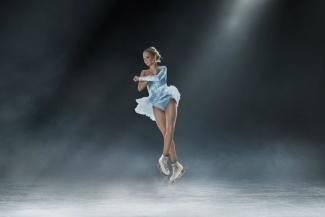Anyone who saw Olympic figure skater Mirai Nagasu’s historic triple axel early this week — she’s the first American woman to pull off the move in Olympic competition — was no doubt impressed by the move, but only with Ithaca College Professor Deborah King’s expertise can you truly comprehend the physics behind figure skating’s most difficult jumps. King has been featured in Smithsonian Magazine, The Daily Beast and Science Friday, explaining just what it takes to spin three, sometimes four times in the air and land on ice.
King, a professor in the Department of Exercise and Sport Sciences who specializes in the biomechanics of figure skating, explained to Smithsonian Magazine that skaters must seek a balance of strength and low body mass in order to jump high but maintain inertia in order to complete more spins. Often, it takes a small bend of the knees or hips to achieve a few extra degrees of rotation before landing a jump.
The momentum needed to spin three to four times in the air takes a toll on a skater’s body when they land. On Science Friday, King compared it to stopping a car.
“It would be like slamming on your brakes to come to a stop at 60 miles per hour,” she said. “They come to a stop very quickly, so that takes a lot of force.”


